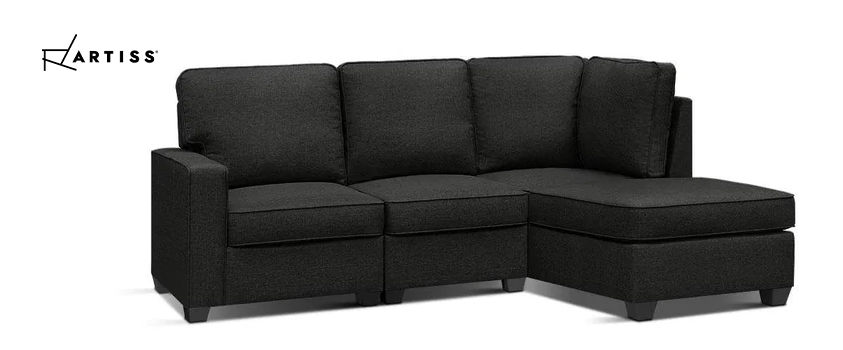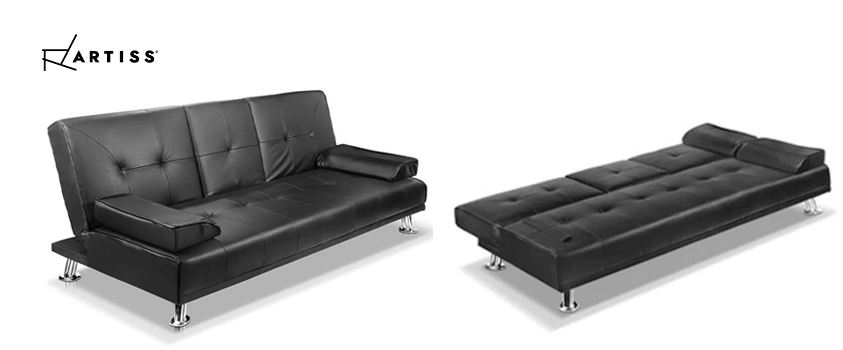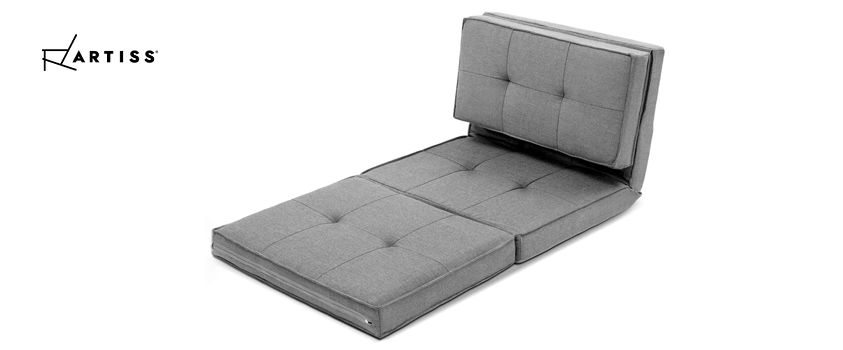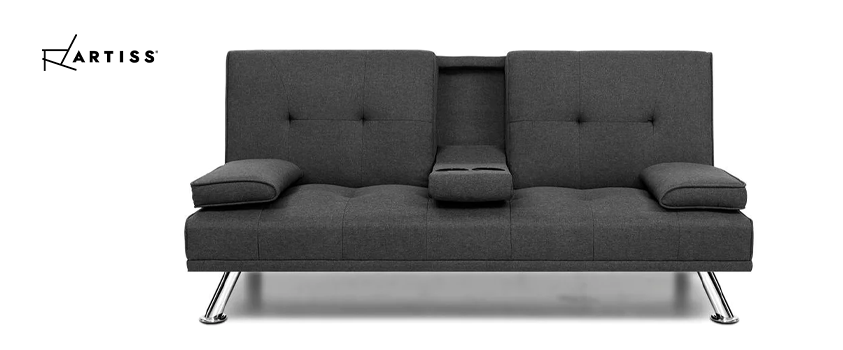How to Find the Perfect Sofa
What would you say is the focal point of a living room? Although it can vary depending on your priorities, many people would say the sofa. Seating is essential to any living space, and the sofa is one of the most important furniture pieces you can own. It is where you sit down to relax after a hard day, entertain your friends and family, and maybe even take a quick nap before getting on with your day. With all that in mind, you’ll want your first forever sofa to be one that is comfortable, aesthetically pleasing, and the right size for your everyday needs. If you’re struggling to find quality sofas, keep reading: we’ve put together a comprehensive sofa buying guide that covers all you need to know about your ideal sofa.
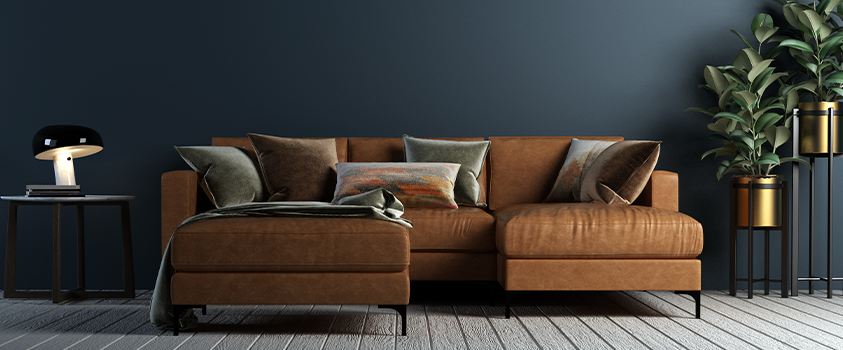
Finding the right size sofa for your space
The first thing you need to do before buying any new furniture, especially a sofa, is to measure your space and determine the maximum measurements you can accommodate. This doesn’t just apply to the room where you’re placing the sofa. Unless your piece arrives in a flat pack or otherwise preassembled, you’re going to have to move this large piece through the home, so you also need to measure your doorways, hallways and staircases. Short of cutting it in half, there’s no easy way to get a long sofa through a narrow hallway with a corner - you may need to tilt, turn or raise it at just the right angle, and for that, you need exact measurements. It also helps to remove any back cushions or seat cushions before hand. The easiest way to smoothly transition a sofa into your living space is to plan everything on paper beforehand, possibly on a grid with your other furniture.
Do you like to watch television from the couch? If you do, then you may need to reconsider your television placement. The viewing distance and angle from the television to your couch have a significant impact on your comfort and overall viewing experience - you can find out more by checking out our blog How to Choose the Right TV Mount or Stand.
What materials should I look for?
Sofas are typically made of three parts - the sofa's frame, the suspension and the cushioning. By examining each part of your potential sofa, you can choose a high quality sofa .
Frame
Sofa frames are often made of wood, though they can also come in steel. For an affordable seat, you may find sofas with an MDF or particleboard frame, though you should avoid these if your priorities are longevity or a high weight capacity. For a solid frame that will hold long-term, look for solid wood frames or furniture-grade plywood. The durability and stability of the chair will also be affected by the number and type of joints in the frame - the more reinforcement the better. Avoid any chairs that sway or wobble when you sit down. You can also find steel frames for the ultimate weight capacity and support.
Suspension
The suspension is the part of the couch that supports the cushions and makes the sofa comfortable. Sinuous springs are the most common type of suspension, while other sofas may have lattice or webbing support to keep the sofa sleek and thin while still providing support. The most supportive type of suspension is made from an eight-way hand-tied spring system, which does the best job to prevent squeaking and sagging. However, this system is also the most expensive. Look for sofas that don’t creak or squeak, and that feel comfortable and supportive when you sit down beyond just the cushion.
Seat Cushions
There is a wide variety of seat cushions that you can use on a sofa. Do you prefer sinking down into a sea of comfort, or do you prefer a high-resilience seat that easily bounces back? Maybe you prefer firm back cushions or perhaps you're after more plump cushions. No matter what your preference is, there is a sofa cushion for you.
For a firm, reliable seat with great support, you may want sofa cushions that are made from high-resilience foam. These foams are usually made from polyurethane and have a bouncy, flexible feel. The higher the density, the longer the sofa will hold its shape. While memory foam has a similar feel, it is more form-fitting and more likely to deform over time. Some sofa cushions have an innerspring core - these are coils wrapped in a layer of foam for an extra bouncy and comfortable feel.
For a truly luxurious experience, you can find cushions filled with goose or duck down. These cushions may be filled completely, or the down may be surrounding a foam core. These will need regular plumping so the cushions don’t lose their shape, which may mean rotating them on a regular basis.
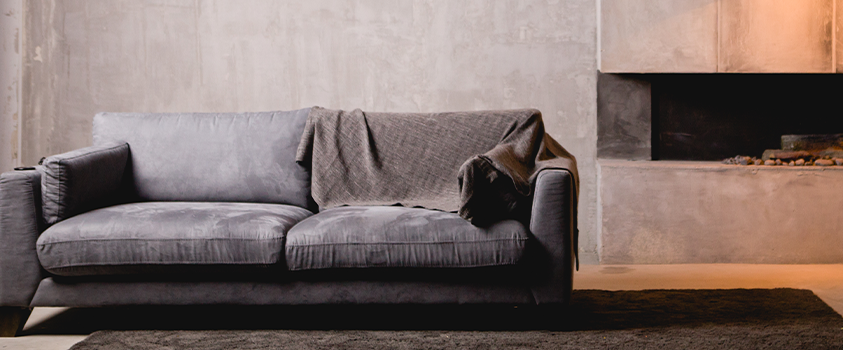
Choosing the right upholstery
There are many different types of upholstery you can choose from. The right upholstery for you will depend on your lifestyle and your spending priorities. Are you looking for something durable and long-lasting, or are you more concerned about environmental impact? Do you have allergies? Are you looking for low-maintenance or high-quality? Whatever you’re looking for, there’s a perfect material for you.
Cotton
Cotton is a natural fibre that is popular, affordable, and very easy to maintain. It is resistant to pilling, very durable, easy to clean and very breathable, so it will feel great in any weather. If you struggle with allergies, cotton is a great choice for you since it’s hypoallergenic. The main drawbacks are that it is easily wrinkled, will fade under direct sunlight, and may stain easily.
Pros of cotton upholstery:
Affordable
Popular - lots of variety
Easy to maintain
Breathable
Cons of cotton upholstery:
Will fade under direct sunlight
Easily wrinkles
Easily stains
Linen
Looking for something durable but also sustainable? Consider linen upholstery. It is a strong and versatile material that is derived from flax crops, making it sustainable and eco-friendly. It is also hypoallergenic and bacteria-resistant. Like cotton, it is very breathable and easy to maintain, but it also wrinkles easily. Linen is also one of the more expensive upholstery types, though still less expensive than others on this list.
Pros of linen upholstery:
Durable
Sustainable
Hypoallergenic
Easy to clean
Breathable
Cons of linen upholstery:
Wrinkles easily
Less affordable
Wool
Wool upholstery is a high-maintenance, high-reward material. It is robust, water-repellant and flame resistant, and it is also incredibly warm and soft. Unfortunately, all that luxury comes with a high price tag. Not only is it expensive up front, but it can only be dry cleaned so it is also expensive to clean.
Pros of wool upholstery:
Robust
Water repellant
Flame repellant
Soft and warm
Cons of wool upholstery:
Expensive to buy
Hard to maintain
Polyester
A very popular synthetic fabric, polyester is a durable and stain-resistant fabric that also doesn’t absorb smells. It is the perfect material for a home with kids or pets - any home that embraces life’s messes! It does absorb perspiration and body oils and it’s not the most breathable fabric in harsh weather conditions, but it’s easy to keep clean and can be quite affordable compared to natural fibres.
Pros of polyester upholstery:
Durable
Stain resistant
Easy to clean
Cons of polyester upholstery:
Not breathable
Absorbs sweat and body oils
Not very eco-friendly
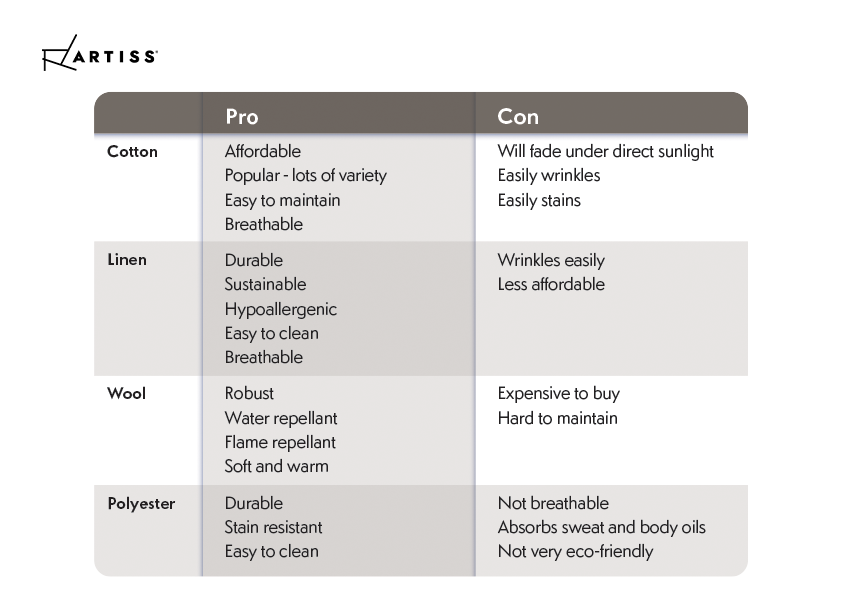
Natural leather
Leather has everything you could want in a sofa material - opulence, durability and comfort. It doesn’t absorb stains and odours in the same way that fabric does, and it only gets better with age as it develops its patina (a soft sheen). Leather upholstered sofas have a beautiful look and feel that suits many spaces, from an executive office suite to your parent’s living room. The only downsides: it’s not very resistant to scratches and bodily oils, it requires more maintenance than standard fabrics, it's not very eco-friendly, it can be hot and sticky in summer, and it comes with a high price tag. For a piece that will last you a lifetime in your forever home, leather is a great choice.
Pros of leather upholstery:
Luxurious
Durable
Aesthetically pleasing
Stain and odour resistant
Cons of leather upholstery:
High maintenance
Prone to scratches
Not eco-friendly
Uncomfortable in summer
PU leather
A more affordable option compared to natural leather, PU leather is made of polyurethane resin and is perfect for the luxury look of leather without the high price tag. It can come in a wide variety of colours - far more than natural leather - and while this material isn’t considered eco-friendly, it is vegan. Unfortunately, the lower price also means less durability. PU leather is more prone to scratches, cracking and peeling as it gets older, and it will never develop the highly aesthetic patina of natural leather. Luckily, you can keep quality PU leather in great shape with proper maintenance.
Pros of PU leather upholstery:
An affordable leather alternative
Vegan
Wide variety of colours
Cons of PU leather upholstery:
Less durable than leather or other synthetic materials
No patina
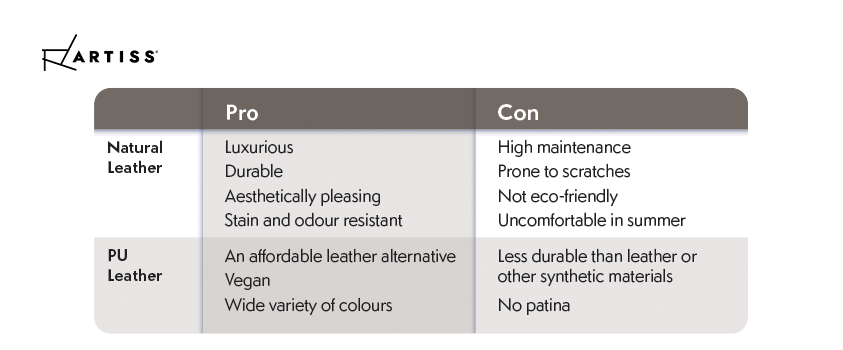
Choose Your Dream Sofa
Standard sofa
When you hear the word sofa, what do you picture in your head? You’re probably imagining a standard sofa. The most common sofa length is 84 inches (213cm), though they can be anywhere between 70+ inches (178+cm) long. The longer the sofa the more seating you have available. Standard sofas also have an average depth of 35 inches (88cm) and height of 26-36 inches (66-91cm). The taller you are, the deeper and higher you may want your couch to be.
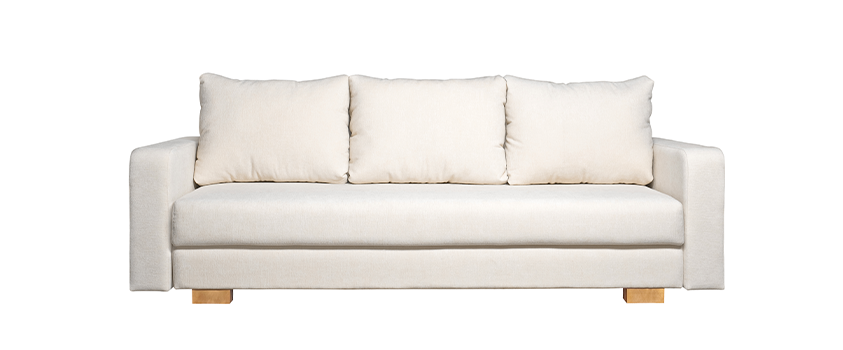
Loveseat
Aside from the adorable name, there’s not much difference between a loveseat and a sofa aside from space. Loveseats are designed to sit two people, reaching 52 inches (130cm) on average, though they can be as long as 71 inches (180cm). These are perfect for small homes or living rooms, empty nooks, or as secondary seating in a larger living room, but they’re better suited to intimate sitting arrangements as opposed to a large party. You could even use them in a study, home theatre or bedroom.
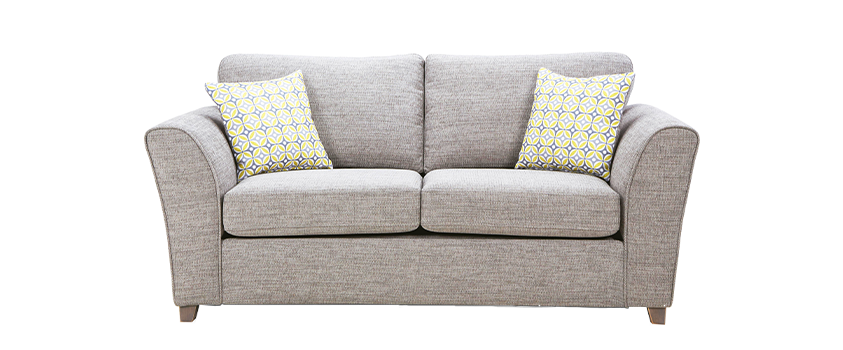
Sectional sofas
Modular or sectional sofas sofas are easily the most flexible type of chair you can have. Modular sofas are made of various pieces that can be pulled apart and put together in various configurations. They don't have to be a huge sofa. Their ability to chop and change makes them perfect for large families with changing seating needs since you can expand or downsize your seating at any time. You’ll need a lot of room for three seat sectional sofas, but they’re perfect for larger homes or living rooms.
Sofa bed/daybed
The ultimate multifunctional marvel, sofa beds (otherwise known as sleeper sofas) can transform in the blink of an eye from a sofa to a bed. Some sofa beds fold out, while others can fit trundle beds below the seat. Some are manual, and some are mechanical. Some come with built-in mattresses, while others have to provide their own. You can use these in your living room as your regular couch, or you can put these in the guest room to save on space while still having somewhere for guests to sit and sleep.
Lounge/floor sofas
Ditch the conventional and get low with a floor sofa. These floor sofa beds or lounges sit low to the ground and can be used in a variety of different ways to stay comfortable while on a budget. They don’t have all the trimmings of modern sofas, but they’re perfect for small homes, gaming/entertainment rooms, bedrooms, guest rooms, or any special nap spots in your home.
Recliner sofa
Love to lean back and relax on game day? Then a reclining sofa is for you. Recliners are not just perfect for relaxing, but they help with circulation, promote good posture, and help provide pain relief from the back and neck. Reclining sofas come in manual or electric models, and some may even include massage or heat functions. If you have the space, you may also want to look at reclining sectional sofas. For more information on buying single recliners, you can check out our blog How To Choose the Perfect Recliner.
Sofa Styles
Cabriole
A cabriole sofa is an upholstered sofa style that traditionally features an exposed wooden frame (sometimes carved), a continuous back and arms and plenty of curves, especially in the legs (commonly referred to as cabriole legs). A popular design in the Victorian era, these sofas are comfortable and effortlessly stylish, usually sitting 2-3 people. Vintage style cabrioles are perfect for French provincial homes, while more modern designs could suit a pop, glamour or chic style.
Camelback
Camelback sofas are so named thanks to a distinct curve in their back that reaches the highest point in the centre before curving downwards to the arms. Some camelbacks may even have two or more extra ‘humps’, making them full of visual interest and character. They are great for breaking up a room with lots of clean, straight lines, and work well in traditional homes looking for that perfect statement piece.
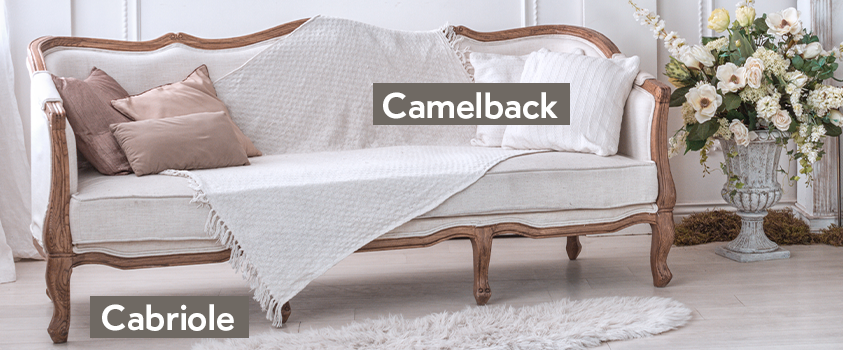
Chaise
While a chaise lounge is its own separate piece of furniture, many sofas also contain a chaise section that is longer/deeper than the rest of the seats. These sofas are perfect for living spaces with multiple people who have different seating preferences - one can sit down with a good book while the other can stretch out to watch TV - no hassle and no need for an ottoman. The extra space can even double as a spare coffee table when you’re running out of room.
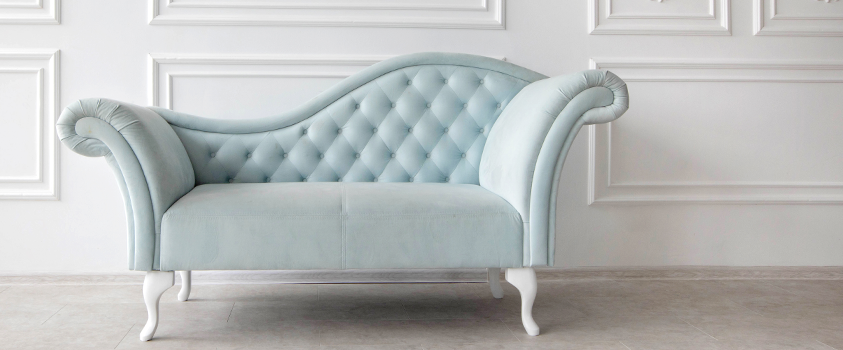
Chesterfield
One of the most recognisable types of furniture, chesterfield sofas feature signature rolled arms that are flush with the back and deep button tufted upholstery, traditionally in rich dark leather. The seat is has more seat depth than other sofas, so this is the choice for you if you like a low couch. Modern chesterfields can feature velvet or other cloth upholstery and have sturdy, solid wood legs. This sofa style looks best amongst industrial style decor and even some minimalist homes.
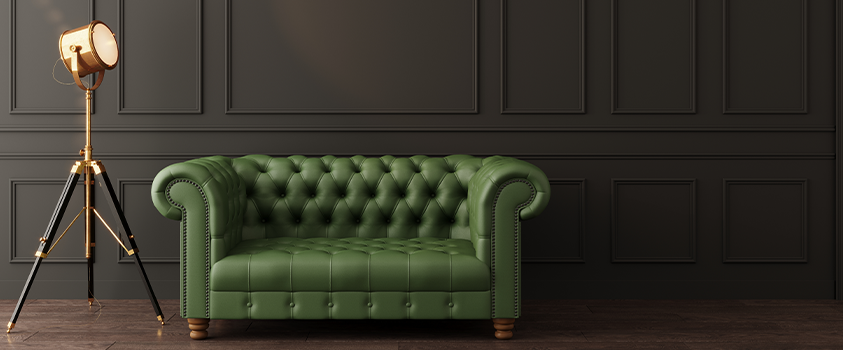
English roll arm
An English roll arm sofa gets its name from its distinctive side profile. The arms have a distinct dip, while the rest of the sofa has a deep seat, distinct T-shaped cushions and a tight back. As the name suggests, this sofa fits homes with classic English furniture, though it will blend in with other styles easily.
Lawson
The Lawson was invented as a bespoke sofa for Thomas Lawson, a famous author and businessman. It is described as the chameleon of sofas, as it easily fits into any home with any style of decor. It has large overstuffed cushions that provide a firm seat, a long design that can feature two to three cushions, and a perfectly angled back to encourage good posture. You can find Lawsons with straight legs for a more modern look, or ruffled skirts for a traditional feel.
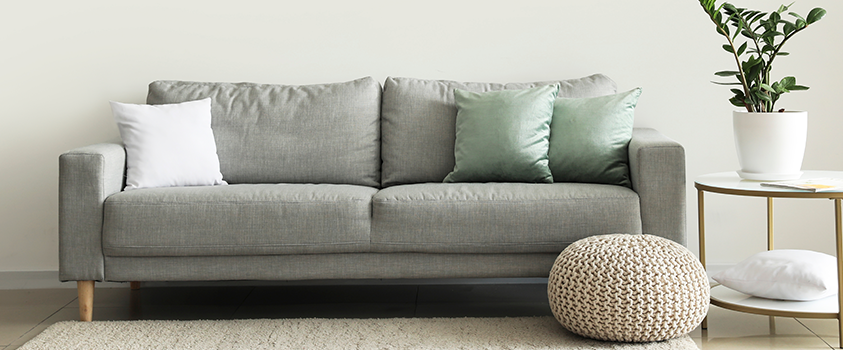
Mid-century
Mid-century sofas feature clean and clear lines, rectangular shapes, subtle curves, mixed textures and exposed legs. These sofas typically have a lower profile than other sofas and use minimal decoration, but they are ergonomically designed for effortless comfort. As the name suggests, these couches worst best in mid-century modern style homes, but they will also suit minimalist styles.
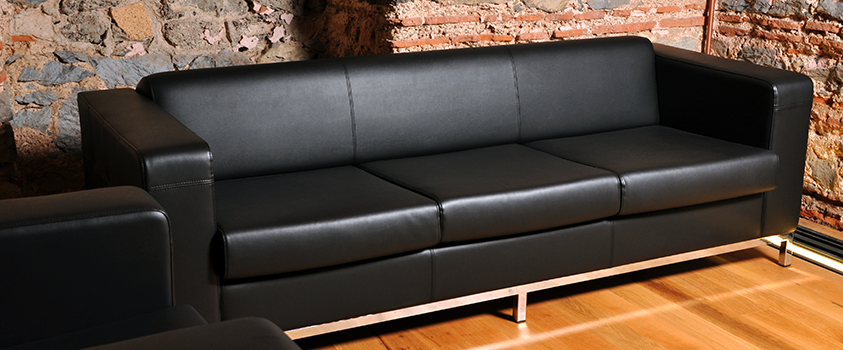
Settee
A settee is similar to a loveseat in that it is a smaller sofa, but a settee will fit two or more people while a loveseat is distinctly designed to fit two people only. Settees began as long wooden benches that became upholstered over time. You may find settees on their own or as a part of a sectional sofa.
Tuxedo
Invented by interior designer Billy Baldwin, Tuxedo sofas feature a boxy shape with arms that are the same height as the back and a clean, geometric design. You can find models with exposed legs, or an upholstered base. They are sleek, square, and can suit a variety of homes from pop to modern.
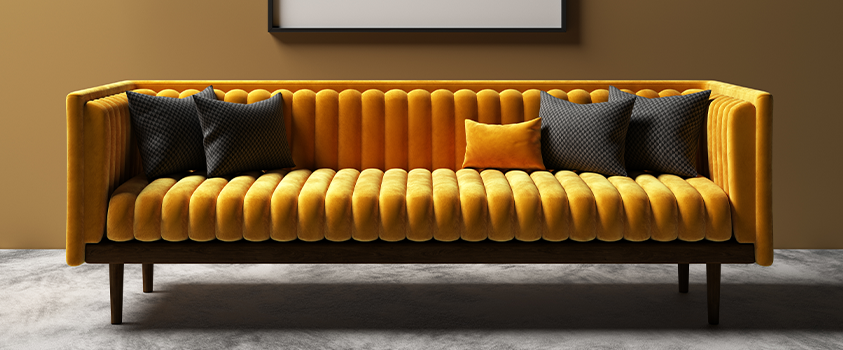
Should I buy a standard or modular sofa?
Not sure whether to buy a modular sofa? It all depends on the size of your home and how many people are living in it. If you have a large space and you love to entertain or you have a large family, modular sofas are perfect for you. They can be rearranged or even split apart to make the most of your living room. You can even arrange them to fit in awkward corners or nooks. If you have a smaller space and prefer quiet nights in, you may prefer a smaller sofa and an occasional chair or two for guests. Modular sofas are more expensive up front depending on the materials and set pieces, but they have long-term flexibility that you’ll love.
Easy ways to get your sofa inside the home
Sometimes, the hardest part of buying a sofa isn’t choosing your favourite seat but getting it in the door. While some sofas come flat-packed so they can be easily assembled indoors, others come preassembled and may need a little more help. Here are some easy tips to help you get your new sofa in and out without hassle.
Measure twice
Always measure your doorways before purchasing not just a sofa, but any new furniture. Measure the width and height of doorways and stairwells. Plan how you’re going to move the piece beforehand, and you’ll save yourself the trouble later on.
Remove the legs and cushions
If you can take the legs and cushions off the sofa, you should do this first. Get rid of any unnecessary obstacles. You may also want to consider temporarily removing the door from its hinges, which will free up a little space and prevent damage to the sofa and the door.
Tip the sofa vertically
If your sofa is too long or wide to fit through horizontally, you might have more luck moving it in vertically. Be careful not to drag the bottom of the sofa on the floor - you may need to lay down a towel or cushion for protection. You can also try rotating the couch, especially if it has a deep seat.
Ask for help
It’s always better to have an extra pair of hands when moving large, heavy pieces of furniture. Since sofas are so long and require a bit of manoeuvring, having a person on each end helps keep everything running smoothly. Hiring a professional may be a bit of extra money, but maybe cheaper than having to reupholster your new couch or fix damage to your floor and walls!
Protecting your sofa after purchase
If you have young children or pets, you may want to protect your sofa from stray crayons, spills, sticky hands or claws. Luckily, there are plenty of ways you can protect your sofa without losing its charm.
One easy way to protect your sofa is to use an upholstery protector. These usually come as sprays and help to seal the fabric against stains, spills and bodily oils. You may also want to keep stain and odour removers on hand for emergencies. Note: for odours caused by animal urine, you may need specialised enzyme removers. Always test your products on a small, unnoticeable part of the couch before use.
Vacuum and spot-clean your couch regularly to prevent a build-up of dust and hair. You can find all sorts of products to help with this, from lint rollers to specialist hair removal tools.
The best way to protect your couch is with a cover - and no, we don’t mean those old, sticky plastic covers. Artiss has a wide range of couch covers that can protect your furniture, from stretchy full-coverage pieces to simple slips that are easy to remove and clean. The covers look and feel great, so you don’t need to worry about creating an eyesore or sacrificing comfort.
Check out other ways to protect your furniture from pets with our blog 9 Ways to Pet Proof Your Home.
Your next sofa is waiting for you at Artiss
Freshen up your living space and sink into comfort with an Artiss sofa, sofa bed, floor lounge or couch cover. We have everything you need to keep you, your family and your guests comfortable through every Netflix binge, book club or cheeky afternoon nap. We don’t just have sofas - we also have coffee tables, ottomans and recliners, everything you could possibly need for a brand-new living space. Check out our range online today and enjoy prompt shipping and friendly customer service from our Australia-based support teams. You can even view some of our pieces right in your living room with our top-of-the-line AR viewing function. Get the living room of your dreams today by shopping with Artiss.










